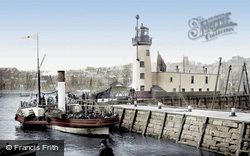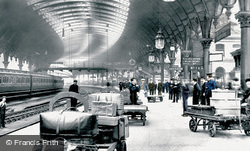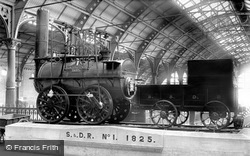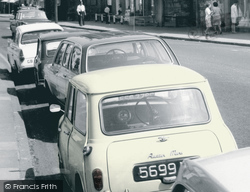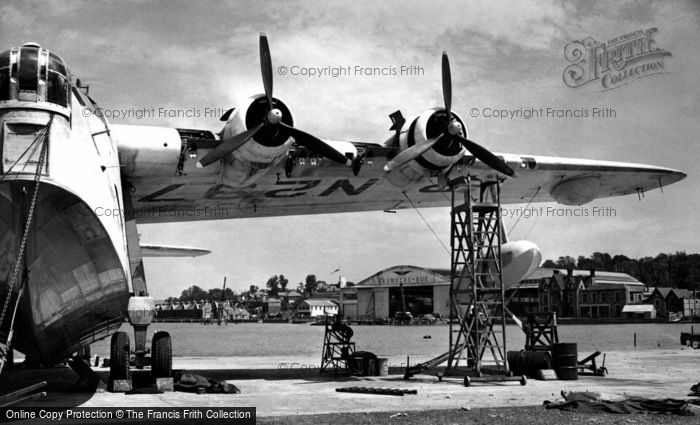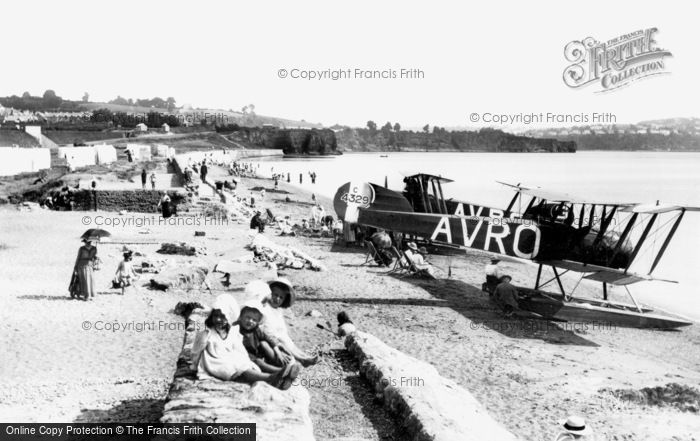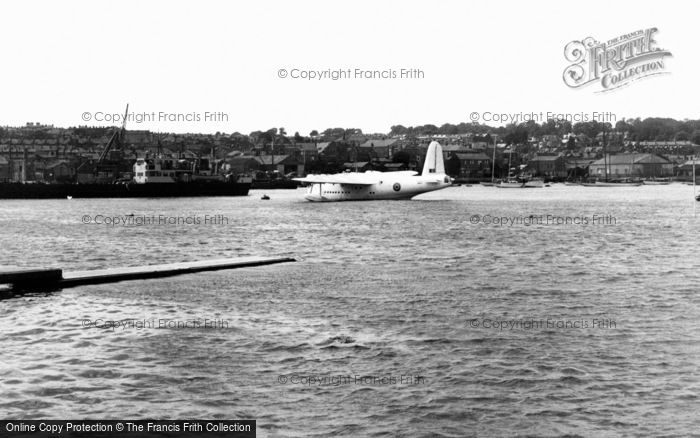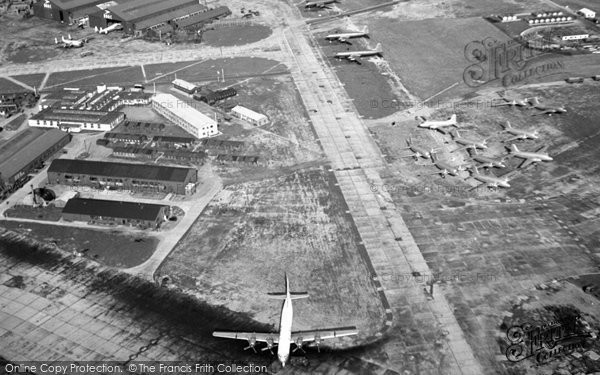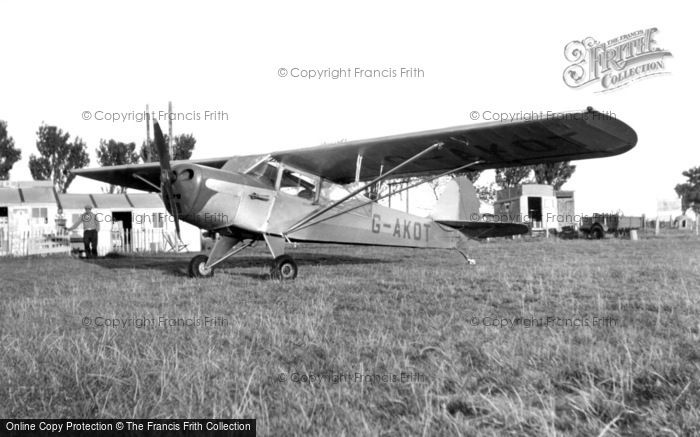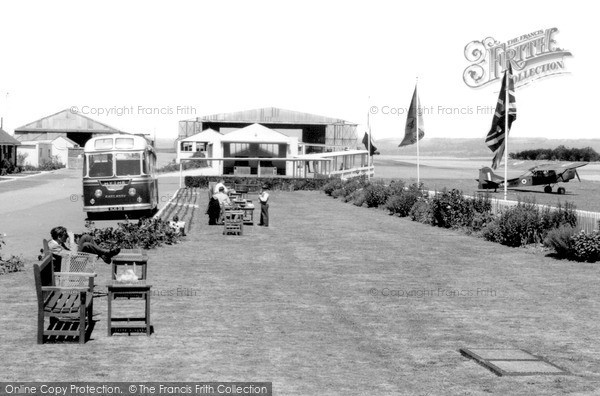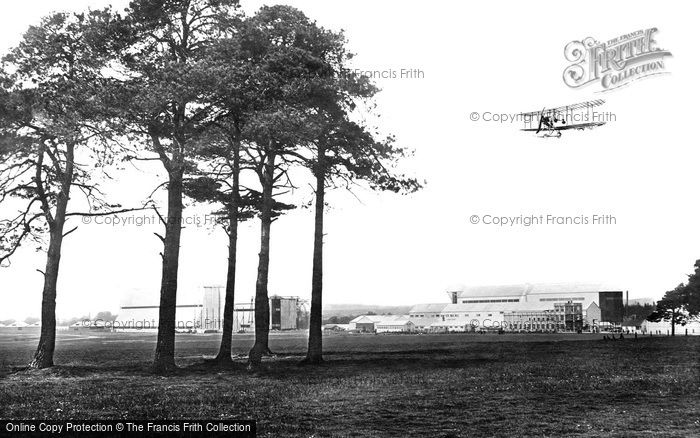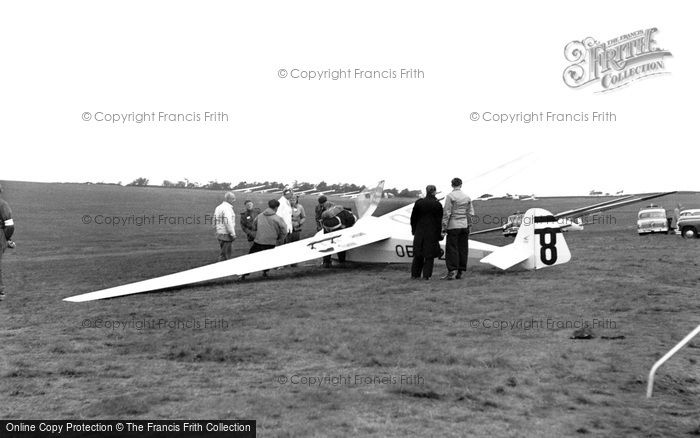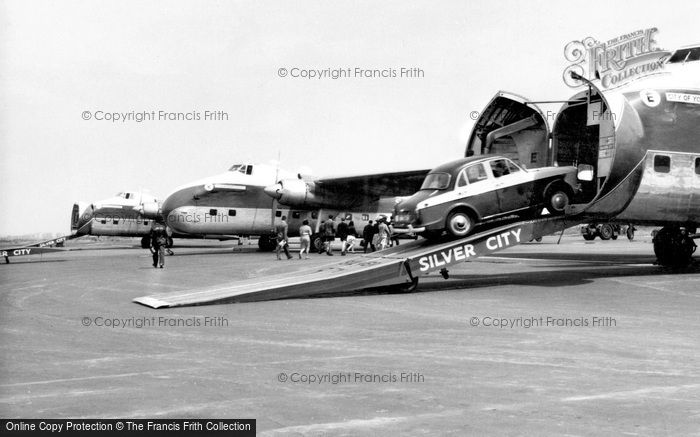Aviation
Published on
March 5th, 2017
One of the principle theoreticians of modern aviation happened also to be one of Francis Frith’s close friends, Francis Herbert Wenham (1824-1908). Francis Wenham was an inventor, engineer and early theorist of flight, who accompanied Francis Frith on two of his photographic expeditions to the Middle East in the 1850s as his technical assistant and collaborator.
We bring you a special photograph feature of our archive photographs featuring seaplanes, gliders and other aircraft. Up, Up and Away!
"When flying machines begin to fly
We shall never stay at home,Away we’ll skip on a half day tripTo Paris, perhaps, or Rome!"
From ‘The Musical Comedy’, ‘The Bride of Bath’, 1906.
One of the Isle of Wight’s industrial giants of the past was based at East Cowes, Saunders-Roe, an aero- and marine-engineering company, particularly known for making giant flying boats for commercial passenger use. This photograph was taken in the mid 1950s looking across the Medina from Cowes, on the west bank, to the main Saunders-Roe yards at East Cowes. The stunning view is framed by the wing of a Short Sunderland flying boat that was being used in the development of control systems etc for the SR45 Princess flying boat then under construction in the East Cowes factory. Saunders-Roe also built other vehicles, such as lifeboats, as well as Sir Malcolm Campbell’s Blue Bird K3, designed by Fred Cooper of Saunders-Roe, in which Campbell broke the water speed record 3 times, twice in 1937 and again in 1938. After a series of company changes and merges over the years, what used to be Saunders-Roe is now part of GKN Aerospace Services, which continues the tradition of aircraft component design and production at East Cowes.
These Avro 504J float-planes must have caused a considerable stir when they arrived at the South Devon resort of Paignton. They were part of a batch of 200 built by Avro for the Royal Flying Corps in 1916 and are seen here still carrying their military markings, although the name on the side indicates some form of civilian activity.
A flying boat rests on the calm waters of the Medina, in the peaceful days of the 1950s. A decade earlier the Isle of Wight had known the hostile use of air-power, being one of the first areas to be bombed during the Battle of Britain.
Heathrow's civilian life began 1 January 1946 under the name 'London Airport'. This photograph was taken from a helicopter and shows the airport being further developed before it was officially renamed as Heathrow Airport in 1966.
A short flight in this light aircraft, even just a few hundred feet up, would give the sightseeing holidaymaker a marvellous view of both the coastline and the Broads inland.
The small civil airport at Lympne was developed from the wartime fighter base, prior to the enormous expansion of London's Heathrow and Gatwick airports, for short cross-channel flights. The limited scale of its operations can be gauged from the relaxed attitudes of these members of its staff as they await the next incoming flight in front of the customs and immigration shed, with a coach poised to transport the arriving passengers to the railway station at Hythe.
Evolving from the Army Balloon Factory, which moved from Aldershot to Farnborough in 1905, into the Royal Aircraft Factory in 1911, before becoming the Royal Aircraft Establishment in 1918, this was the scene of Samuel Franklin Cody’s first powered flight in Great Britain in 1908. Sadly, Cody was to die in an aircraft accident in 1913, the year this photograph was taken.
The Derbyshire and Lancashire Gliding Club, based at Camphill, 1,360ft up on Hucklow Edge, had its finest moment when the World Gliding Championships, during which this photograph was taken, were held here in 1954. The club is still very active, operating from what must be one of the most scenic sites in the country.
The airport opened in July 1954. Flights were to Le Touquet, France and Ostend, Belgium, taking passengers and cars. The short flights enabled drivers to be on the roads of France or Belgium much more quickly than if they used the ferries.
"The most beautiful dream that has haunted the heart of man since Icarus is today reality." - Louis Bleriot (1872-1936). Two monuments in Dover commemorate historic flights across the Strait of Dover. One is on the hillside known as Northfall Meadow, immediately behind Dover Castle, where granite paving stones laid out in the shape of a monoplane mark the landing spot of Louis Blériot, the Frenchman who made the very first flight across the Channel from France to England on July 25th 1909. The other is the bronze statue on the Promenade of Charles Rolls, who was a pioneering aviator as well as the founder of the Rolls-Royce car company with Frederick Royce. He made the first non-stop return flight across the Channel from Dover and back in his Wright Flyer biplane on 2nd June 1910, but unfortunately he was killed a few weeks later when his plane crashed during a flying display near Bournemouth, which also made him the first Briton to die in an aviation accident. The statue was unveiled in 1912 and was the work of Kathleen Scott, the sculptress wife of the Antarctic explorer Captain Robert Falcon Scott.
This post has the following tags:
Archives.
You may find more posts of interest within those tags.
Join the thousands who receive our regular doses of warming nostalgia!
Have our latest blog posts and archive news delivered directly to your
inbox.
Absolutely free. Unsubscribe anytime.



